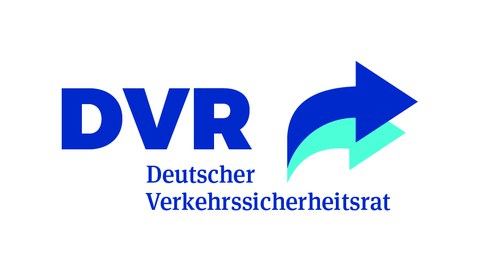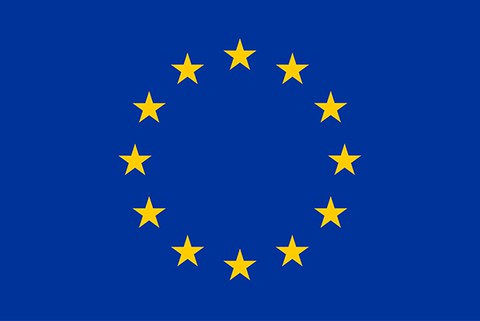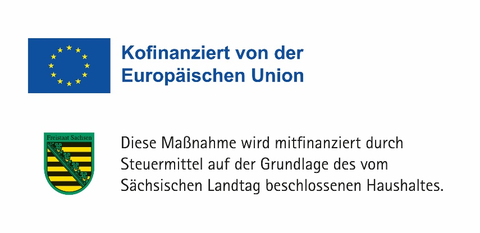Laufende Projekte

DVR-Logo
Fördergeber: Deutscher Verkehrssicherheitsrat (DVR)
Ansprechpartner: Dipl.-Psych. Juliane Anke, M.Sc. Simon Heintzen
Laufzeit: Dezember 2025 – Juni 2026
Ziel des Projekts ist es, das Unfallgeschehen, relevante Risikofaktoren und Präventionspotenziale im Arbeitsalltag von RiderInnen systematisch zu erfassen. Dazu entwickelt die Professur für Verkehrspsychologie eine mehrsprachige Online-Befragung, die zentrale Einflussfaktoren wie Unfall- und „Beinahe“-Ereignisse, Regelwissen, Verkehrsakulturation, risikorelevantes Verhalten sowie Verbesserungsvorschläge aus Sicht der RiderInnen erhebt. Die Befragung wird gemeinsam mit ExpertInnen aus Verkehrssicherheit, Gewerkschaften, BranchenvertreterInnen und RiderInnen selbst konzipiert, um eine hohe Praxisrelevanz sicherzustellen.
Auf Basis der Datenerhebung führt die Professur eine umfassende datenbasierte Auswertung durch. Diese reicht von deskriptiven Analysen des Unfallgeschehens bis zu statistischen Modellen, die Zusammenhänge zwischen verschiedenen Einflussfaktoren und dem Unfallrisiko prüfen. Die Ergebnisse bilden die Grundlage für evidenzbasierte Handlungsempfehlungen für Politik, Lieferdienste, Kommunen und Präventionsakteure.
Das Projekt schafft damit erstmals eine fundierte empirische Basis zur Verkehrssicherheit von RiderInnen in Deutschland und liefert konkrete Ansatzpunkte, wie Arbeitsbedingungen, Infrastruktur und Verkehrsverhalten gezielt verbessert werden können.
Fördergeber: EFRE InfraProNet 2021-2027
Projektpartner: Professur für Informationstechnik für Verkehrssysteme (ITVS) TU Dresden, Professur für Verkehrsprozessautomatisierung (VPA) TU Dresden
Ansprechpartner: Prof. Dr. Tibor Petzoldt, M.Sc. Simon Heintzen
Laufzeit: Juli 2025 – Dezember 2027
Das interdisziplinäre Forschungsprojekt PROTEKT zielt darauf ab, die Sicherheit vulnerabler Verkehrsteilnehmender (VRU) im urbanen Raum durch moderne Kommunikationstechnologien zu verbessern. Im Mittelpunkt steht die Weiterentwicklung und Integration von V2X-Technologien (Vehicle-to-Everything). Durch die Erfassung und Vernetzung relevanter Verkehrsdaten in Echtzeit können kritische Situationen frühzeitig erkannt und präventive Warnungen ausgesprochen werden.
Die Professur für Verkehrspsychologie untersucht im Projekt die Wahrnehmungs- und Entscheidungsprozesse von Radfahrenden in komplexen urbanen Verkehrsräumen – insbesondere an Knotenpunkten, an denen verschiedene Verkehrsträger wie Radfahrer, motorisierter Individualverkehr und öffentlicher Nahverkehr zusammenkommen. Im Mittelpunkt steht die Frage, wie vulnerable Verkehrsteilnehmende (VRU) Risiken in dynamischen Verkehrssituationen einschätzen, auf welche visuellen, akustischen oder infrastrukturellen Hinweise sie sich verlassen und unter welchen Bedingungen Gefahren übersehen werden. Anhand empirischer Studien, wie etwa Beobachtungen im realen Verkehr, Simulationen oder Befragungen, werden typische Wahrnehmungsfehler, Aufmerksamkeitsmuster und Risikoeinschätzungen identifiziert. Diese Erkenntnisse bilden die Grundlage dafür, V2X-basierte Kommunikations- und Warnsysteme so zu gestalten, dass sie Entscheidungsprozesse von Radfahrenden unterstützen und kritische Situationen frühzeitig entschärfen.
Fördergeber: European Union HORIZON
Projektpartner: Q-Plan International Advisors PC (Griechenland), Technische Universität Tallinn (Estland), Universität Modena und Reggio Emilia (Italien), Institute of Communication and Computer Systems (Griechenland), Algebra Universität (Kroatien), Universität Novi Sad (Serbien), Institute of Studies for the Integration of Systems (Italien), White Research SRL (Belgien), Agency for the Promotion of European Research (Italien), Region Zentralmakedonien (Griechenland), Road Traffic Safety Agency (Serbien), Dissemination Science Communication DISSCO Lab (Schweiz), International Road Federation (Schweiz)
Ansprechpartner: Dr. Tina Morgenstern, Dr. Jens Schade
Laufzeit: Juli 2025 – Juni 2028
Das EU-Projekt Roads4All verfolgt das Ziel, eine positive Verkehrssicherheitskultur im Einklang mit dem europäischen Leitbild „Vision Zero“ zu fördern. Das Projekt betrachtet Verkehrssicherheit aus einer kulturellen und institutionellen Gesamtperspektive und zielt darauf ab, Einstellungen und Verhaltensweisen auf individueller, organisatorischer und institutioneller Ebene nachhaltig zu verändern. Zur Unterstützung dieses Wandels entwickelt Roads4All evidenzbasierte Werkzeuge – darunter ein Modell der Verkehrssicherheitskultur, ein Rahmenwerk für kulturellen Wandel sowie ein Entscheidungsunterstützungstool. Ein zentrales Projektelement bildet die Konzeption, Umsetzung und Evaluation der sogenannten „Living Roads“ – integrierte, kontextsensitive und theoriegestützte Interventionen, die in fünf unterschiedlichen europäischen Kontexten erprobt werden. Dazu zählen schulbezogene Bildungsmaßnahmen, Sensibilisierungskampagnen, Mikromobilitäts-Interventionen sowie gezielte Maßnahmen für Behörden und Institutionen. Insgesamt zielt Roads4All auf einen ganzheitlichen Wandel bei Verkehrsteilnehmenden, Organisationen und Institutionen ab – mit besonderem Fokus auf junge Menschen – und leistet damit einen Beitrag zu sichereren, inklusiveren und nachhaltigeren Mobilitätssystemen in ganz Europa.
Die Professur für Verkehrspsychologie ist im Projekt für die Entwicklung und Validierung des Modells der Verkehrssicherheitskultur sowie die Konzeption und Umsetzung evidenzbasierter Interventionen im Rahmen von experimentellen Studiendesigns verantwortlich.
Das Projekt wird gefördert durch das HORIZON Wissenschafts- und Innovationsprogramm der Europäischen Union unter dem Förderkennzeichen Nr. 101203314.

EU Logo
Fördergeber: Bundesanstalt für Straßen- und Verkehrswesen
Projektnummer: FE 03.0623/2022/GRB
Projektpartner: ELECTRIC-SPECIAL Photronicsysteme GmbH
Ansprechpartner: Dr.-Ing. Christoph Schulze
Laufzeit: Mai 2025 – April 2027
Für den adaptiven Betrieb von Straßenbeleuchtungen bestehen bislang viele verschiedene, vor allem durch technische Entwicklung von diversen Systemkomponenten motivierte Ansätze. Technische Umsetzungen beziehen sich zumeist auf Einzelanlagen. Um dem Klima- , Immissions- und Umweltschutz in gebotener Weise gerecht werden zu können, bedarf es umfassenderer Betriebskonzepte für die Straßenbeleuchtung, die mindestens zeitliche und örtliche, idealerweise auch weitere Aspekte adaptiven Betriebs umfassen und sich gleichzeitig für die verkehrlichen Bedingungen der verschiedenen Straßen im Gesamtnetz eignen. Das Forschungsvorhaben untersucht zentrale Merkmale für solche Betriebskonzepte u.a. anhand verschiedener Szenarien im Reallabor und betrachtet dabei die technisch-betrieblichen, als auch weiter reichenden Nutz-, Stör- und Aufwandsaspekte.
Fördergeber: Bundesanstalt für Straßen- und Verkehrswesen
Projektnummer: FE 77.0603/2022
Ansprechpartner: Dr.-Ing. Christoph Schulze, Dr. Sven-Thomas Graupner
Laufzeit: Juli 2024 – Juni 2027
Die lichttechnische Bewertung der ortsfesten Beleuchtung von Straßen und Wegen außerhalb der Hauptverkehrsstraßen erfolgt bislang nicht nach der Leuchtdichtetechnik. Diese ermöglicht jedoch eine gezieltere Dimensionierung und direktere Bewertung, auch im Kontext der Verkehrssicherheit (Erkennbarkeit). Bei Anwendung der Leuchtdichtetechnik können neben dem Energieverbrauch auch Überbeleuchtung und andere ungünstige Umweltwirkungen verringert werden. Das Forschungsvorhaben begründet basierend auf der Leuchtdichtetechnik ein beleuchtungstechnisches Bewertungskonzept, das für Tempo-30-Zonen und Radverkehr geeignet ist und untersucht die Auswirkungen. Außerdem wird das Zusammenwirken von ortsfester Beleuchtung und fahrzeugeigener Beleuchtung untersucht, vor allem in Bezug auf die Erkennbarkeit und Möglichkeiten zur Modifikation.
Fördergeber: Bundesanstalt für Straßenwesen
Projektpartner: infas (Institut für angewandte Sozialwissenschaft)
Ansprechpartner: M. Sc. Lisa Zwicker, Dr. Dipl.-Psych. Jens Schade
Laufzeit: April 2024 – September 2025
Unter anderem durch die Straßenverkehrs-Ordnung (StVO) werden in Deutschland Regeln zum Verhalten im Straßenverkehr aufgestellt, die die Verkehrssicherheit unterstützen und das Konfliktpotenzial unter den verschiedenen Verkehrsteilnehmer:innen minimieren sollen. Die Nichteinhaltung von Verhaltensregeln stellt dabei einen personenseitigen Hauptgrund für Straßenverkehrsunfälle dar. Sie kann dadurch bedingt sein, dass (richtiges) Wissen über eine Regel vorliegt und bewusst überschritten wird – gegen die Regel wird also verstoßen. Der Nichtbefolgung kann allerdings auch eine fehlende oder falsche Regelkenntnis zu Grunde liegen.
Im Projekt „Befragung zum Kenntnisstand bezüglich der geltenden Verhaltensregeln im Straßenverkehr“ wird daher untersucht, welches Wissen in der Bevölkerung zu bestimmten Verkehrs- und Verhaltensregeln vorliegt. Dabei werden vor allem solche Regeln in den Fokus gesetzt, die eine hohe Relevanz für die Verkehrssicherheit besitzen. Es wird angestrebt, den Kenntnisstand entsprechend verschiedener Altersgruppen zu beschreiben und die Befragung darüber hinaus so zu gestalten, dass Aussagen über die verschiedenen Gruppen der Verkehrsmittelnutzung (z. B. Autofahrende, Motorradfahrende, zu Fuß Gehende) möglich sind. Dazu wird zum einen ein Online-Fragebogen und zum anderen eine telefonische Befragung entworfen und durch den Projektpartner infas durchgeführt.
Projektpartner: Audi AG
Ansprechpartner: Prof. Dr. Tibor Petzoldt, M. Sc. Jenny Damme
Laufzeit: Jan. 2023 – Jan. 2026
Vom automatisierten Fahren erhoffen sich viele Menschen Vorteile, darunter einen sichereren und flüssigeren Straßenverkehr. Allerdings können diese Vorteile erst dann zu ihrer vollen Wirkung kommen, wenn auch das Verhalten automatisierter Fahrzeuge auf eine breitere Akzeptanz in der Bevölkerung stoßen und sich folglich eine Bereitschaft zu ihrer Nutzung entwickeln würde.
Um Akzeptanz schaffen zu können, empfiehlt sich die Gestaltung des Verhaltens automatisierter Fahrzeuge in enger Abstimmung mit den Erwartungen, die die potenziellen Nutzer:innen und Interaktionspartner:innen daran haben. Bereits vielfach untersucht wurden die Erwartungen an das fahrdynamische Verhalten unter dem Aspekt des Komforts (bspw. Längs- und Querbeschleunigung). Nahezu unbeachtet hingegen blieben bisher die Erwartungen an die Systemauslegung, die das Verhalten auf Manöverebene betrifft (bspw. Überhol- und Einfädelungsmanöver).
Daher soll im Rahmen des Projektes die Fragestellung geklärt werden, welche Parameter einen Einfluss auf die Akzeptanz des Verhaltens automatisierter Fahrzeuge auf Manöverebene ausüben (bspw. Persönlichkeitsmerkmale und Verkehrskultur). Dabei soll einerseits das Ziel erreicht werden, Aspekte zu identifizieren, die bei der Gestaltung des Verhaltens allgemein beachtet werden sollten. Andererseits sollen aber auch konkrete Gestaltungsempfehlungen für das Verhalten im Kontext von ausgewählten Fahrmanövern bzw. Einflussgrößen abgeleitet werden.
Dazu wird eine Reihe an Untersuchungen stattfinden. Dabei sollen Proband:innen anhand von Bildern bzw. Videos sowie im Virtual Reality-Fahrsimulator und Realfahrzeug verschiedene Fahrmanöver präsentiert werden, wobei jeweils die Verhaltensweisen und ausgewählte Einflussgrößen variiert werden sollen. Die Proband:innen sollen die Verhaltensweisen dann bewerten (bspw. hinsichtlich ihrer Akzeptanz und Nützlichkeit), im VR-Fahrsimulator bzw. Realfahrzeug soll zusätzlich das Verhalten der Proband:innen erfasst werden (bspw. Übernahme- und Blickverhalten).


